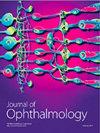含金纳米颗粒和硬晶石的水凝胶植入物的抗菌效果,并开发用于眼眶和眶周区域重建手术
IF 1.8
4区 医学
Q3 OPHTHALMOLOGY
引用次数: 0
摘要
背景:开发能够存放药物(特别是抗菌药物和抗癌药物)的眼眶水凝胶植入物是非常重要的。目的:评价含金纳米颗粒和白晶硅的混合水凝胶种植体用于眼眶和眶周重建手术的抗菌效果。材料与方法:采用30%乙醇水溶液。以大肠杆菌ATCC 25922、粪肠球菌ATCC 29213、金黄色葡萄球菌ATCC 25923和铜绿假单胞菌ATCC 27853菌株对合成的水凝胶进行抑菌活性测定。结果:合成的眼窝水凝胶植入物均无菌。所合成的水凝胶及其纳米复合材料对大肠杆菌ATCC 25922、粪肠杆菌ATCC 29213和金黄色葡萄球菌ATCC 25923具有抑菌作用,对铜绿假单胞菌ATCC 27853具有杀菌作用。本研究还证明了含有金纳米颗粒和白刚玉的杂化水凝胶植入物具有显著的杀菌效果。结论:将眼窝水凝胶植入物密封于聚丙烯袋中,121℃蒸汽灭菌20分钟后,眼窝水凝胶植入物无菌。我们的研究结果表明,合成的水凝胶和含有金纳米颗粒和铝酸盐的水凝胶纳米复合材料对感兴趣的细菌菌株具有抑菌和杀菌作用,这将允许这些水凝胶在植入物中的应用中没有细菌污染或低细菌污染的可能性。本文章由计算机程序翻译,如有差异,请以英文原文为准。
Antimicrobial effects of hydrogel implants incorporating gold nanopartucles and albucide and developed for reconstructive surgery in the orbit and periorbital area
Background: It is important to develop orbital hydrogel implants capable of depositing drugs (particularly, antimicrobial and anticancer drugs). Purpose: To assess antimicrobial effects of hybrid hydrogel implants containing gold nanoparticles and albucide and developed for reconstructive surgery in the orbit and periorbital area. Material and Methods: A 30% aqueous solution of albucide was used in the study. Antimicrobial activity of synthesized hydrogels was determined using Escherichia coli ATCC 25922, Enterococcus faecalis ATCC 29213, Staphylococcus aureus ATCC 25923 and Pseudomonas aeruginosa ATCC 27853 strains. Results: All the synthesized samples of orbital hydrogel implants were sterile. The synthesized hydrogels and hydrogel nanocomposites with incorporated Au nanoparticles demonstrated bacteriostatic effects against E. Coli ATCC 25922, E. Faecalis ATCC 29213, and S. Aureus ATCC 25923 strains, and bactericidal effects against P. Aeruginosa ATCC 27853 strain. This study also demonstrated marked bactericidal effects of hybrid hydrogel implants incorporating both Au nanoparticles and albucide. Conclusion: Orbital hydrogel implants were found to be sterile after being sealed into polypropylene bags and steam sterilized at 121 °C for 20 minutes. Our findings of bacteriostatic and bactericidal effects of the synthesized hydrogels and hydrogel nanocomposites containing Au nanoparticles and albucide against bacterial strains of interest will allow for the absence of, or low probability of bacterial contamination in applications of these hydrogels in implants.
求助全文
通过发布文献求助,成功后即可免费获取论文全文。
去求助
来源期刊

Journal of Ophthalmology
MEDICINE, RESEARCH & EXPERIMENTAL-OPHTHALMOLOGY
CiteScore
4.30
自引率
5.30%
发文量
194
审稿时长
6-12 weeks
期刊介绍:
Journal of Ophthalmology is a peer-reviewed, Open Access journal that publishes original research articles, review articles, and clinical studies related to the anatomy, physiology and diseases of the eye. Submissions should focus on new diagnostic and surgical techniques, instrument and therapy updates, as well as clinical trials and research findings.
 求助内容:
求助内容: 应助结果提醒方式:
应助结果提醒方式:


